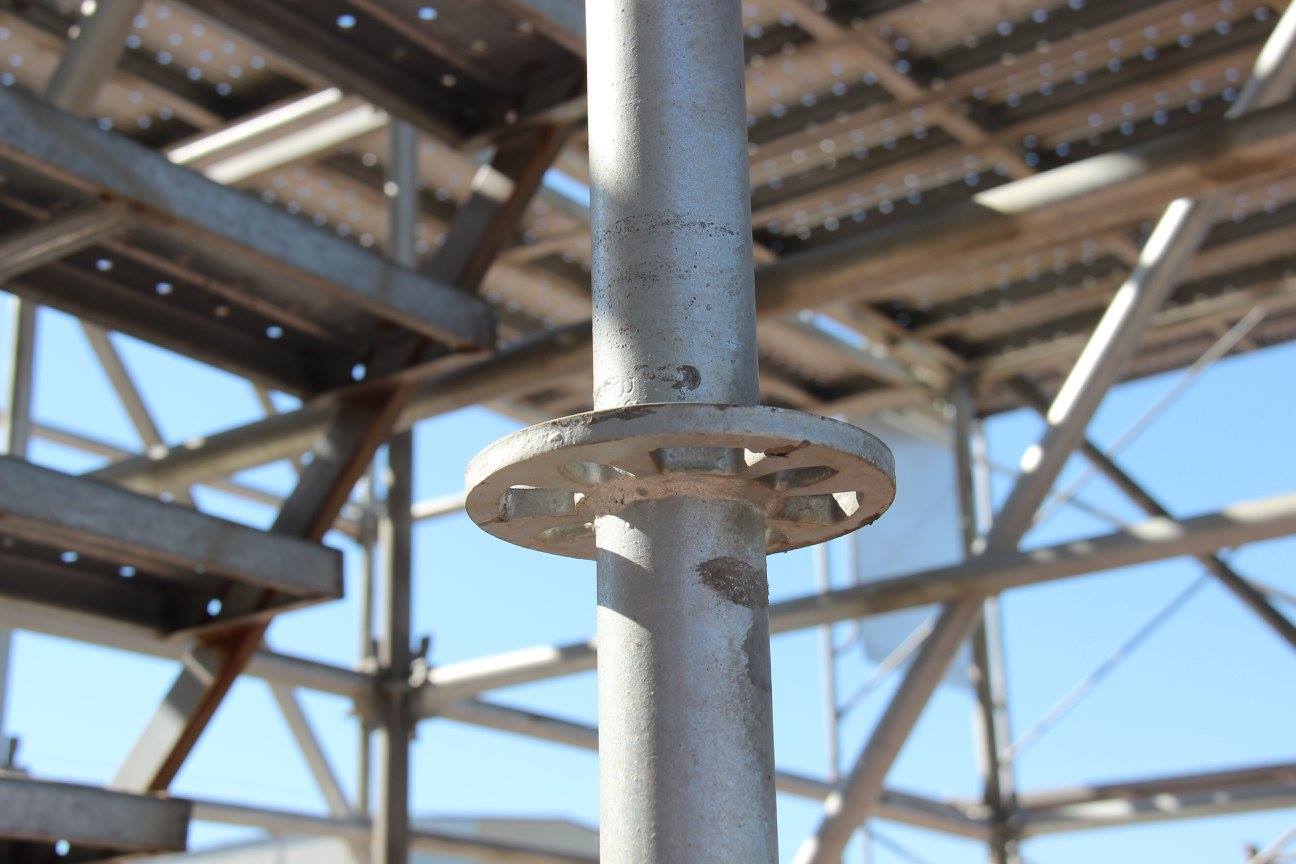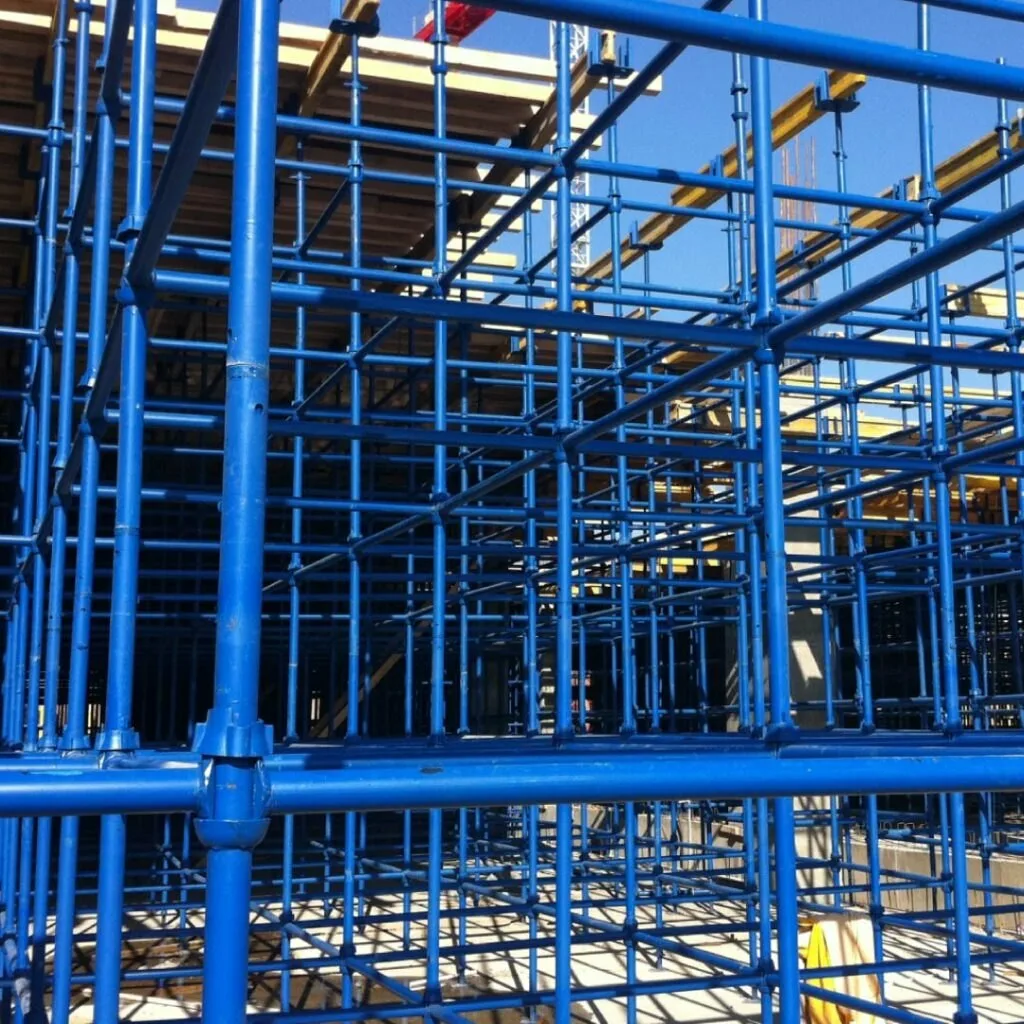
In the construction industry, time is money. Delays in setting up access structures can lead to cascading project setbacks and increased labor costs. Therefore, choosing a scaffolding system that allows for quick assembly and dismantling is critical to maximizing site efficiency and reducing operational overhead. Among the major modular scaffolding systems—Ringlock, Cuplock, and Kwikstage—each has merits, but some clearly outperform others in terms of speed and ease of use.
This article compares the speed of erection and dismantling of these systems, identifies which is fastest overall, and outlines the tools needed for each.
What Makes a Scaffold System Fast to Erect and Dismantle?
The speed of assembly and dismantling depends on several factors:
Simplicity of the connection mechanism
Number of components required
Tool requirements
Ease of aligning and securing parts
System modularity and standardization
Labor skill level needed
A faster system reduces on-site man-hours, minimizes disruption to other trades, and improves project turnaround times.
Scaffold System Overview
1. Ringlock Scaffolding
Connection Method:
Ringlock uses a rosette (ring) welded to vertical standards. Ledgers, transoms, and braces are connected using wedge-heads that lock into the rosette at various angles.

Assembly Time:
Very fast, especially on complex or high-rise projects.
One person can easily secure components using only a hammer.
No need for additional clamps or angle fittings.
Tool Requirements:
Hammer only
No wrenches or special equipment required.
Advantages:
Allows for 360-degree connections.
Minimal components and high degree of prefabrication.
Easy to assemble even on uneven ground or curved structures.
Time Efficiency:
Studies and site experience indicate that Ringlock can be assembled 30–50% faster than traditional tube and clamp systems and 15–25% faster than Cuplock in complex builds.
2. Cuplock Scaffolding
Connection Method:
Cuplock features a cup-and-blade locking system. Ledgers with blades fit into bottom cups on the standards, and a top cup is rotated and hammered to lock everything in place.

Assembly Time:
Fast and reliable on repetitive structures like façades and vertical towers.
Slightly slower than Ringlock in projects requiring changes in direction or elevation.
Tool Requirements:
Hammer
Occasional use of a level or measuring tape for alignment.
Advantages:
Strong and durable system.
Efficient for uniform and grid-like designs.
Quick vertical assembly in regular intervals.
Limitations:
Less flexible on curves or angles.
Components must be placed at fixed node points.
Time Efficiency:
Faster than Kwikstage for vertical structures, but slower than Ringlock for irregular or complex shapes.
3. Kwikstage Scaffolding
Connection Method:
Kwikstage uses wedge-and-V-pressing connections. Transoms and ledgers are inserted into V-shaped pressings and secured by hammering in wedges.
Assembly Time:
Moderate assembly speed; faster than tube and clamp, but slower than Ringlock and Cuplock.
More components needed compared to Ringlock.
Tool Requirements:
Hammer
Occasionally a spirit level or tape measure for platform alignment.
Advantages:
Good for basic façades and box-like structures.
Relatively simple layout.
Limitations:
More component variations mean longer sorting and fitting times.
Less efficient for multi-angle or circular platforms.
Time Efficiency:
Best suited for medium-scale or residential projects. On average, Kwikstage can take 10–20% longer to erect than Ringlock, especially on complex builds.
Which System Is the Fastest?
Winner: Ringlock Scaffolding
Ringlock scaffolding is widely recognized across global markets as the fastest modular system to assemble and dismantle—especially on projects that involve:
Irregular building geometry
Elevated work platforms
Confined or limited-access areas
Frequent reconfiguration or movement
The wedge-and-rosette design is engineered for speed and flexibility, requiring only a hammer to complete secure connections. In contrast to systems with limited joint options or strict 90-degree nodes, Ringlock’s 360-degree connection capability significantly reduces the need for workaround parts, alignment delays, or custom fittings.
This efficiency translates to fewer workers needed, shorter job durations, and lower labor costs—key advantages on time-sensitive or labor-intensive sites.
Summary Table: Scaffold Speed & Tool Comparison
| Scaffold System | Avg. Assembly Speed | Tool(s) Required | Best Use Cases | Flexibility |
|---|---|---|---|---|
| Ringlock | ★★★★★ (Fastest) | Hammer only | Complex builds, curves, industrial plants | High |
| Cuplock | ★★★★☆ | Hammer only | Vertical towers, façades, high-rise work | Moderate |
| Kwikstage | ★★★☆☆ | Hammer | Residential, box-shaped builds | Low–Moderate |
Final Thoughts
In a construction environment where project efficiency, adaptability, and safety are paramount, the speed of scaffold erection and dismantling becomes a significant factor in selecting the right system. While Cuplock and Kwikstage serve their purposes well, especially in standardized environments, Ringlock scaffolding is clearly the leader when speed, simplicity, and versatility are essential.
With only a hammer and a minimal learning curve, skilled workers can quickly assemble secure, load-bearing structures that adapt to nearly any building shape or site constraint. For contractors aiming to reduce labor costs, hit tight deadlines, and maintain high safety standards, Ringlock remains the fastest and most efficient solution on the market.
By the way, if you have any scaffold materials demand, ADTO Group is your best choice, which own over 20 years experice on building industry. It was founded in 1998 and is a global one-stop provider of building materials. The group operates 12 first-level business divisions and over 260 sub-divisions, all of which are source factories. It provides comprehensive high-quality services including design, production, processing, sales, and international logistics for a full range of construction materials, decoration materials, and home furnishing materials to global clients on a sustainable basis.










